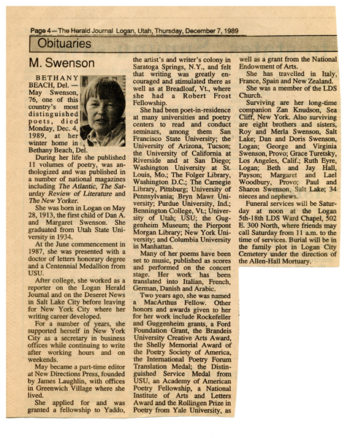Celebrating Pride Month: The May Swenson Papers
In celebration of Pride Month, Special Collections will be highlighting materials in our collections that are by or related to members of the LGBT community. Today, we will be exploring the Modern Literature Collection’s May Swenson Papers.
About May Swenson
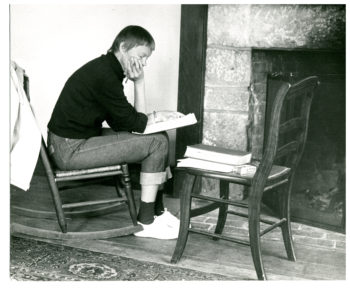
Anna Thilda May “May” Swenson was born in Utah in 1913 to Swedish-American parents. She was the eldest of 10 children in a conservative Mormon household. Swenson received a B.S. from Utah State University in 1939, and an honorary PhD from the same institution in 1987, the same year she won the prestigious MacArthur fellowship.
During her long writing career, Swenson published 10 collections of poems, including three volumes of children’s poems, a collection of essays, and a one-act play. Three additional collections of her poems were published posthumously, including a collection of love poems that reveals several poems for or about her longtime companion, Pearl Schwartz.
Early Letters from Pearl Schwartz
Swenson met Schwartz May of 1949, when she was 36 and Schwartz was 26. Schwartz quickly moved in with Swenson and her roommate Trudie Lubitsch in their New York apartment. In the first year of their romance, Swenson wrote a number of love poems, some of which, like “He That None Could Capture” portrayed her lover as a man and were published in Another Animal (1959). Others, including “To A Dark Girl” in which the lover is revealed to be a woman, were not published until after her death in a posthumous collection called The Love Poems (2003).
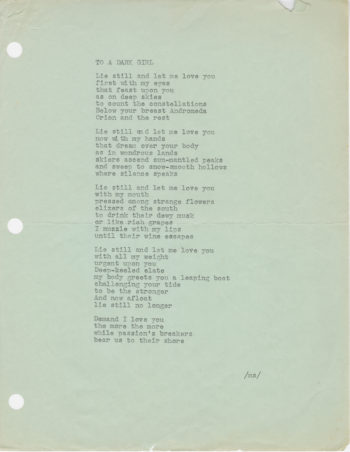
In the seventeen years that Schwartz and Swenson were together, they felt they had to keep their relationship relatively secret. In a late interview, Schwartz reveals that “It was dangerous at the time to be gay” and that the two were afraid that Swenson would not be published if her sexuality was revealed. In her diary and other manuscripts, Swenson would refer to Schwartz by the code names “Blackie” (because of Pearl’s dark hair), “Jay” or simply “J.” Swenson dedicated her third collection of poetry, Half Sun Half Sleep (1967), to “J,” and she also wrote a poem titled “Coda to J” that was published posthumously in The Love Poems. Even in letters they wrote to one another, Schwartz and Swenson use the codenames Jay and Miken, Schwartz’s name for Swenson.
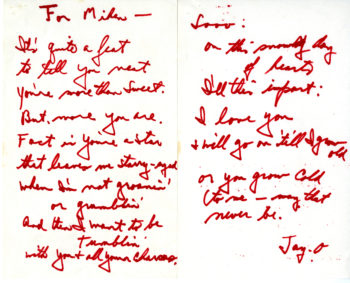
Schwartz seems to be just as enamored with Swenson as Swenson was with her. In the first year they were together, Swenson returned to Utah to visit her family for the holidays, and Schwartz wrote to her every day, sometimes multiple times a day, and would complain if she did not receive a letter back. The letter below was written on December 21, 1949, and was the first of two letters she sent that day. In it, Schwartz jokingly complains that she has not received a letter from Swenson yet and tells Swenson that if her parents comment about the number of letters she is receiving from a woman she should tell them that Schwartz is a fellow poet she is collaborating with.
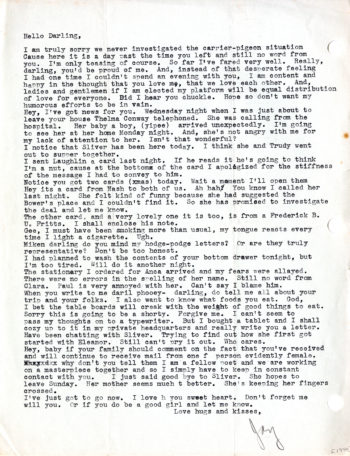
In 1960, Schwartz and Swenson traveled Europe together, seeing as much of France, Spain, and Italy as they could in a year. The photo of May below was taken in Sienna during this vacation.
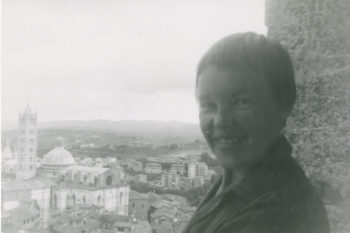
Schwartz and Swenson’s relationship ended sometime in the mid-1960s, but the two remained friends. Below is an antique postcard that Schwartz sent to both Swenson and her new partner, Rozanne “Zan” Knudson, as well as a photograph of Pearl from 1974.
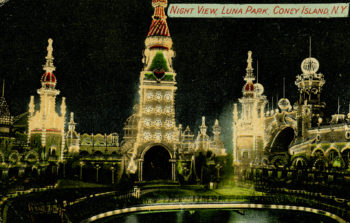

Attending “Gay Parade”
Swenson met Zan Knudson while the former was working as writer-in-residence at Purdue University in 1966. In the fall of 1967, the two bought a summer cottage on the North Shore of Long Island in the village of Sea Cliff, where they would live together until Swenson’s death twenty-two years later. Swenson and Knudson were perhaps able to be more out about their relationship than Swenson had been with Schwartz, particularly toward the end of Swenson’s life. Below are photographs from a Gay Pride Parade (simply labeled the “Gay Parade” by Swenson on the photo envelope). Although the photographs are not dated or otherwise identified, they are probably from a parade in New York City in the early 1980s.
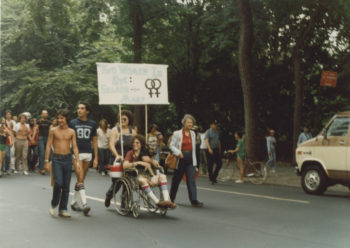

More About the Swenson Papers
In addition to Swenson’s manuscripts for her poems and collected works, Washington University’s May Swenson Papers also has a vast collection of photographs, correspondence, and ephemera from Swenson. Swenson corresponded with a number of other lesbian artists and authors, including but not limited to the landscape painter Nell Blain, the poet Mary Oliver, and the poet Elizabeth Bishop. Swenson and Bishop had an extensive correspondence that lasted twenty-nine years, the vast majority of which are in the Swenson Papers, and selections of which can be accessed online in the Washington University Libraries’ “Final Versions” digital exhibit as well as the MLC50 digital exhibit.
